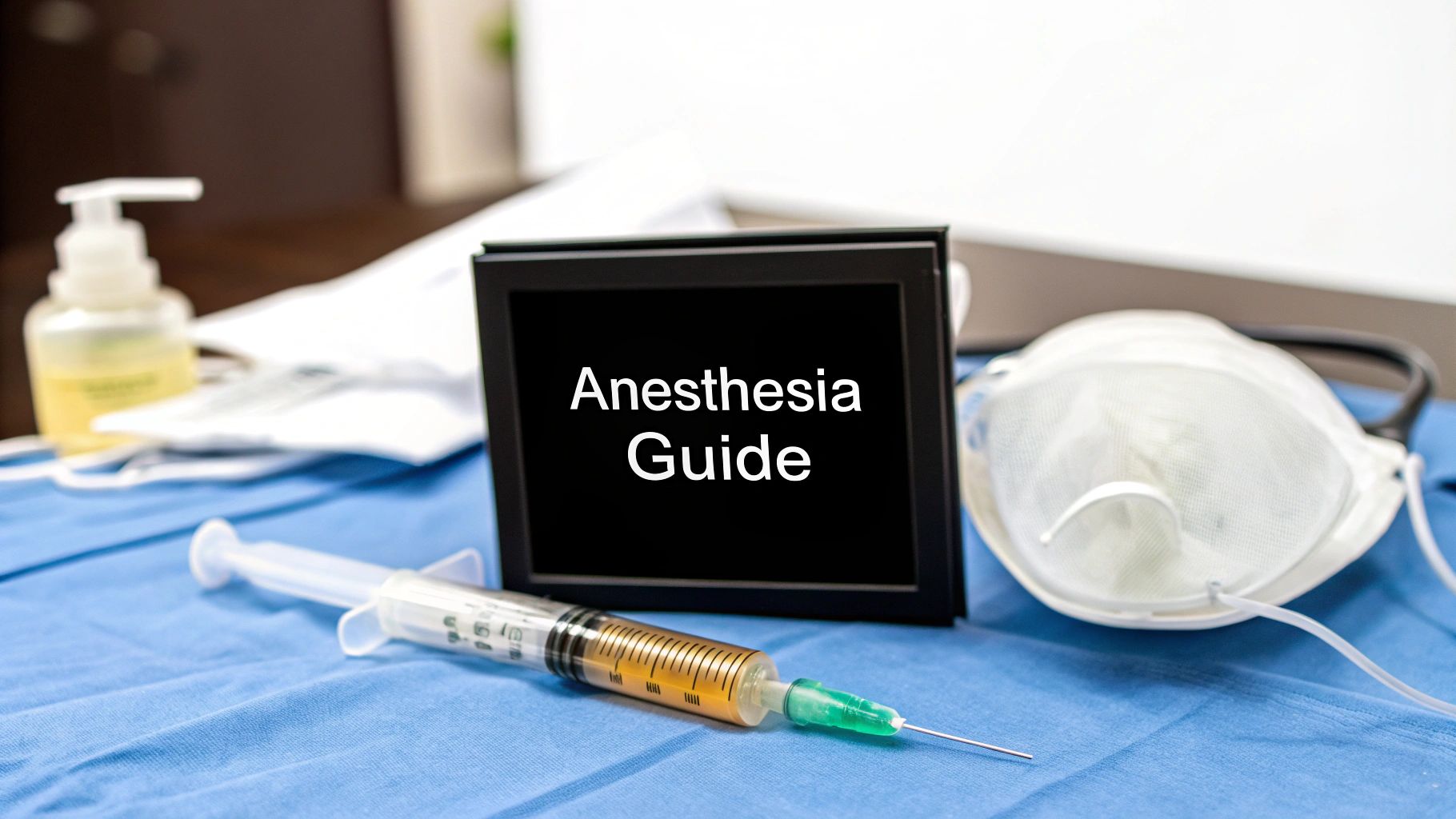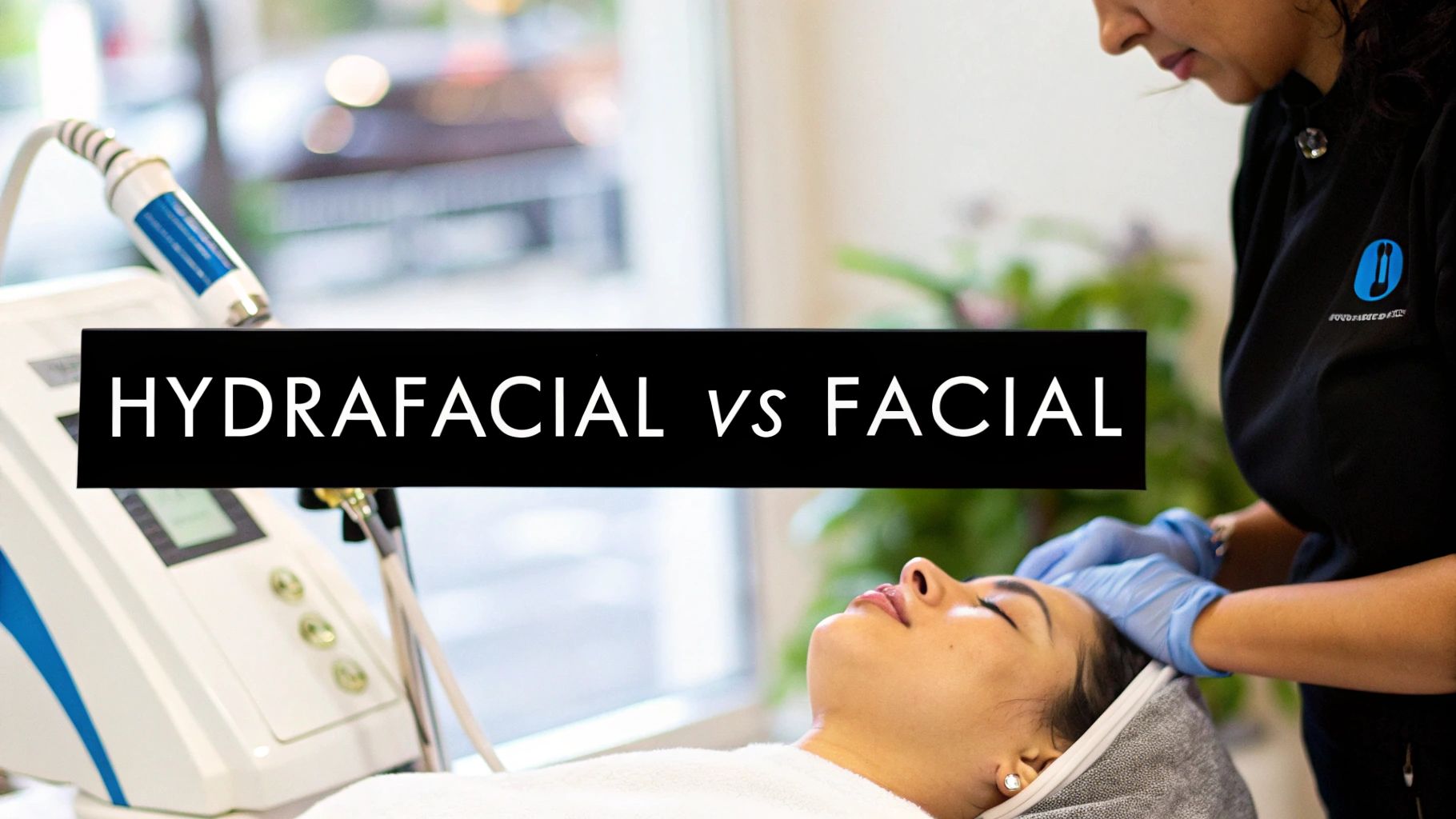
October 12, 2025
Anesthesia Types for Surgery A Patient's Guide
Discover the main anesthesia types for surgery. This guide explains general, regional, local, and sedation to help you prepare for your procedure.
Aug 28, 2025

Cosmetic surgery continues to grow in popularity worldwide, with millions of procedures performed annually. While most patients seek enhanced appearance and confidence, safety remains a paramount concern. This article explores comprehensive safety statistics, the importance of accredited surgical facilities, common risks, and how accreditation directly influences patient outcomes in cosmetic surgery.
Accredited outpatient facilities must meet rigorous national criteria for safety, equipment quality, staff training, and surgeon credentials. These standards ensure that the environment is safe and equipped to handle any complications that may arise. Accreditation involves regular review and adherence to policies related to sterilization, emergency protocols, and proper patient care.
Major bodies like AAAASF (American Association for Accreditation of Ambulatory Surgery Facilities), AAAHC (Accreditation Association for Ambulatory Health Care), JCAHO (Joint Commission), and QUAD A set industry benchmarks. Facilities seeking accreditation from these organizations must demonstrate compliance with their comprehensive standards, which include staff qualifications, facility safety, and emergency preparedness.
Accredited clinics must have state-of-the-art equipment, qualified anesthesia providers, trained personnel, and clear emergency plans. They also need to maintain proper medication supplies to manage complications. These elements collectively create a safer operating setting tailored specifically for cosmetic procedures.
Statistical data shows that cosmetic surgeries performed in accredited outpatient facilities have an extremely low complication rate—less than 0.5%. Furthermore, the mortality rate in these approved centers is less than 1 in 57,000 procedures, significantly lower than non-accredited facilities.
Studies indicate that major complication rates are 1.3% in office-based surgical suites, 1.9% in ambulatory surgery centers, and 2.4% in hospitals. Patients operated on in accredited offices face fewer risks, with risk ratios favoring these settings over hospitals and non-accredited clinics.
| Facility Type | Major Complication Rate | Mortality Rate | Additional Notes |
|---|---|---|---|
| Office-Based Surgical Suites | 1.3% | Very low (~0.0015%) | Lower overall risk |
| Ambulatory Surgery Centers | 1.9% | Very low (~0.0015%) | Similar standards to outpatient clinics |
| Hospitals | 2.4% | Slightly higher | Typically for more complex cases |
Choosing an accredited facility backed by recognized regulatory bodies ensures adherence to safety protocols, proper equipment, and qualified personnel, substantially reducing the risk of adverse outcomes.

Board certification for plastic surgeons is a critical indicator of their qualifications, expertise, and commitment to safety. It signifies that a surgeon has completed rigorous training, an extensive residency program, and has passed comprehensive examinations in plastic surgery. Certification demonstrates the surgeon's adherence to high educational and ethical standards, ensuring they are well-equipped to perform cosmetic procedures safely.
In the United States, the most respected certifying body is the American Board of Plastic Surgery (ABPS). Surgeons certified by ABPS have demonstrated mastery of both reconstructive and aesthetic surgical techniques. Other reputable organizations include the American Society of Plastic Surgeons (ASPS) and, in different countries, specialty boards such as the Royal College of Surgeons.
Certification by recognized authorities confirms that a surgeon has met stringent training and competency benchmarks. It ensures that they stay up-to-date with current surgical techniques and safety protocols. Certified surgeons are more likely to operate in accredited facilities that meet rigorous standards, which together reduce complication risks.
Hospitals and surgical centers assign privileges based on a surgeon’s certification, training, and experience. These privileges allow surgeons to perform procedures within these facilities, which often have higher safety and emergency protocols. Verifying that a surgeon has hospital privileges relevant to cosmetic procedures is an important step in choosing a safe practice.
Prior to undergoing cosmetic surgery, patients should confirm that both their surgeon and the facility are properly accredited. Accreditation from recognized organizations such as AAAASF, JCAHO, or AAAHC indicates compliance with strict standards for safety, equipment, personnel, and patient care. This adds a layer of assurance that the procedure will be performed under optimal safety conditions.
| Aspect | Importance | Responsible Body | Additional Notes |
|---|---|---|---|
| Surgeon Certification | Ensures surgeon expertise and safety | ABPS, ASPS | Verify current certification status |
| Facility Accreditation | Guarantees facility safety and standards | AAAASF, JCAHO | Look for clear accreditation credentials |
| Hospital Privileges | Found in hospital records | Hospital credentialing departments | Confirm ability to perform procedures at the facility |
Using only qualified, certified, and accredited professionals and facilities is essential for minimizing risks and ensuring the best possible outcomes in cosmetic surgery.

Cosmetic surgery, when performed in accredited facilities by qualified surgeons, has a very low complication rate. However, like all surgical procedures, it carries certain inherent risks.
Common complications include infections at the surgical site, hematomas (collections of blood under the skin), nerve damage, and venous thromboembolism (VTE), which refers to blood clots that can travel to the lungs. Data shows that infection rates requiring reoperation occur in less than 0.1% to 7% of cases depending on the specific procedure.
Other potential risks include excessive bleeding, which might require additional medical intervention, scarring, and fluid accumulation in tissues. Postoperative swelling and bruising are common but typically resolve with proper care. Less visible but significant problems include nerve injury, which can sometimes lead to persistent numbness or changes in sensation.
Anesthesia-related risks are always a concern, especially in procedures requiring general anesthesia. These include adverse reactions, pneumonia, and blood clots, as well as rare but serious complications. Accredited facilities ensure the presence of qualified anesthesia providers to manage and mitigate these risks.
Postoperative recovery can also involve fatigue, emotional swings, or mood changes, which are usually temporary. Adherence to postoperative care instructions is critical for reducing complications.
Certain patient-related factors can increase the risk of complications. Obesity raises the risk of wound healing problems and VTE. Smoking impairs blood flow and tissue healing, leading to higher chances of infection and poor scarring. Diabetes can increase susceptibility to infections and slow recovery.
Patients with these risk factors require thorough preoperative evaluation and often need tailored plans to minimize potential complications.
Performing multiple procedures at once or surgeries lasting longer than three hours elevates the risk of adverse outcomes. For example, combining procedures like liposuction and abdominoplasty significantly increases the likelihood of VTE, with odds ratios up to 12.65.
Long surgeries also increase blood loss and anesthesia-related risks. High BMI coupled with extended surgical times warrants careful monitoring and possibly staged procedures to ensure patient safety.
Statistical data indicates that minor complications such as hematomas occur in approximately 0.9% of cases. Infection rates are around 0.5%, with VTE observed in roughly 0.2% to less than 0.1% depending on the procedure.
Mortality rates in accredited facilities remain below 1 in 50,000 procedures, demonstrating the safety of well-regulated environments.
| Procedure | Minor Complication Rate | Major Complication Rate | VTE Incidence | Mortality Rate |
|---|---|---|---|---|
| Abdominoplasty | 2-7% | Significant in 1 in 13,000 | 0.4% | 1 in 10,000 - 13,000 |
| Liposuction | 0.10-0.15% | Less than 0.3% | <0.1% | 1 in 50,000 |
| Breast Procedures | 1.5-1.1% | Slightly higher for major complications | Less than 0.1% | No specific data |
| Brazilian Butt Lift | Estimated 1 in 15,000 to 20,000 | Low but serious risks | Not specified | 1 in 15,000 to 20,000 |
Choosing an accredited facility, avoiding multiple procedures in one session, especially in high-risk patients, and working with experienced, board-certified surgeons are fundamental steps in minimizing these risks.

In the realm of cosmetic surgery, the overall complication rate is around 1%. Specifically, studies involving thousands of procedures have shown that approximately 0.98% of cases experience some form of complication. Most of these are minor, such as hematomas, which represent over 80% of the reoperations required. Infections are quite rare, occurring in approximately 0.06% of cases, while blood clots or venous thromboembolism (VTE) are seen in about 0.05%. Serious complications like nerve damage or significant bleeding are even less frequent.
This low rate of adverse outcomes highlights the safety of cosmetic procedures, particularly when performed by qualified, board-certified plastic surgeons in accredited facilities. Factors such as the type of procedure, patient health status, and whether multiple procedures are combined can influence the likelihood of complications. Patients should remain informed and vigilant, especially when surgeries are performed abroad or in less regulated environments.
Different cosmetic surgeries carry varying risks. For example, abdominoplasty (tummy tuck) has a complication rate of around 2%, with common issues including hematomas (2%), infections (2-7%), and VTE (0.4%). Mortality related to abdominoplasty is estimated at roughly 1 in 10,000 to 13,000 procedures.
Liposuction shows a relatively low complication rate, with minor issues occurring in 0.15% and infections in 0.10%. The mortality rate for liposuction averages about 1 in 50,000, reflecting its safety profile.
Breast augmentation procedures have complication rates lower than 1%, with serious outcomes being quite rare. Nonetheless, concerns such as implant infections or nerve damage, although infrequent, require proper management.
A study comparing different facility types reveals that outpatient surgical suites (OBSS) have the lowest major complication rates at approximately 1.3%. Ambulatory surgery centers (ASCs) see slightly higher rates at 1.9%, while hospitals report around 2.4%. Multivariate analysis indicates patients are less likely to experience complications in OBSS settings compared to ASCs (relative risk 0.67) and hospitals (relative risk 0.59).
Regarding mortality, the rates are remarkably low across all settings, with some studies reporting rates as minimal as 0.0015% in both outpatient and hospital environments.
Brazilian Butt Lifts, which involve fat grafting to augment the buttocks, have a higher mortality risk, estimated between 1 in 15,000 and 1 in 20,000 procedures. This procedure carries unique risks, mainly due to the potential for fat embolism when fat enters the venous system.
Similarly, liposuction and abdominoplasty are associated with increased risks of serious complications if performed improperly or under unfavorable conditions.
Accredited facilities, such as those certified by AAAASF, AAAHC, or JCAHO, significantly contribute to patient safety. These centers maintain rigorous standards for equipment, operating room safety, personnel, and surgeon credentials.
Studies show that complication rates are lower in accredited outpatient settings, with major complication rates as low as 1.3%. Accreditation ensures adherence to safety guidelines, emergency preparedness, and proper postoperative care.
In summary, plastic surgeries generally have low complication and mortality rates, especially when conducted in accredited facilities by qualified surgeons. Patients are encouraged to verify their chosen center’s accreditation and surgeon’s credentials to minimize risks and optimize outcomes.

Patient safety in cosmetic procedures relies heavily on rigorous protocols designed to minimize risks and ensure optimal outcomes. Initially, a comprehensive preoperative evaluation is conducted to assess the patient's health status, including screening for risk factors such as obesity, smoking, and underlying medical conditions like diabetes.
Proper patient selection is essential; only candidates deemed suitable by a qualified, board-certified plastic surgeon should proceed with surgery. Patients are thoroughly informed about potential risks through detailed informed consent discussions to promote transparency.
Surgeons perform procedures in accredited facilities that adhere to high safety standards. These standards are enforced by recognized organizations such as AAAASF, QUAD A, or the Joint Commission. These organizations set strict guidelines for equipment quality, operating room safety, credentialing of personnel, and infection control protocols.
Anesthesia providers in these settings are always qualified specialists—anesthesiologists or nurse anesthetists certified to safely administer anesthesia—who continuously monitor the patient throughout the surgery. Throughout the procedure, sterile techniques are maintained rigorously to prevent infection.
Incorporating surgical safety checklists, especially the WHO 19-question checklist, significantly reduces errors, promotes consistent communication among surgical teams, and ensures all safety steps are followed.
Postoperative care is also crucial. It involves vigilant monitoring for complications such as bleeding or infection, with clear plans for early intervention if necessary. Surgeons emphasize transparent communication during follow-up visits and provide detailed postoperative instructions.
The experience and ongoing education of the surgical team contribute greatly to safety. Continuous training in new techniques, updates on safety protocols, and participation in accreditation programs foster a culture of safety.
Overall, adhering to these practices—meticulous preoperative evaluations, qualified personnel, accredited facilities, safety checklists, and comprehensive postoperative care—forms the backbone of patient protection in cosmetic surgery.

Safety data significantly impact how patients choose their surgeons and facilities for cosmetic procedures. Transparent information about complication and mortality rates helps patients assess the overall risk associated with different procedures and providers. When safety statistics show low complication rates—such as less than 1% serious complications in accredited outpatient facilities—patients tend to feel more confident in selecting qualified, board-certified surgeons operating in recognized centers.
Patients are encouraged to review data from reputable sources like CosmetAssure or facility accreditation bodies such as AAAASF, which regularly publish safety outcomes. These statistics emphasize the importance of verifying surgeon credentials and ensuring that the facility meets strict safety standards, including proper equipment, emergency preparedness, and qualified personnel.
Public safety reports and accreditation verification further empower patients to differentiate between high- and low-risk providers. Understanding the risks associated with unregulated or non-accredited operators—particularly abroad—highlights the dangers of choosing less scrutinized facilities. Such facilities often lack comprehensive safety protocols, increasing the likelihood of complications, infections, or even death.
Educational efforts aimed at informing patients about the significance of facility credentials and surgeon expertise are vital. When patients know that accredited facilities follow stringent safety guidelines and maintain high standards, they are more inclined to prioritize safety over cost or convenience.
In summary, access to clear, reliable safety data encourages informed decision-making. Patients who review complication and mortality statistics tend to select safer options, significantly reducing their risk of adverse outcomes and enhancing overall satisfaction with their cosmetic surgery experience.
Recent research highlights that performing multiple procedures simultaneously and conditions like obesity significantly increase the risk of complications in cosmetic surgery. For instance, procedures involving longer operative times or larger fat volumes, such as liposuction exceeding 3 liters, are associated with higher instances of venous thromboembolism (VTE) and other adverse events. Patients with higher BMI and those undergoing combined surgeries are more vulnerable to postoperative complications, including hematomas and infections, underscoring the importance of thorough preoperative assessment and tailored surgical planning.
Innovative efforts are underway to develop predictive safety scores that help identify high-risk patients preoperatively. These scoring systems consider factors such as age, BMI, procedure complexity, and comorbidities. Although still under validation, such tools aim to guide surgeons in decision-making, enhance patient counseling, and improve overall outcomes by flagging cases requiring additional precautions or hospital-based care.
Facilities that maintain accreditation from recognized bodies like AAAASF, JCAHO, or AAAHC demonstrate adherence to rigorous standards. Continuous quality improvement programs mandated by these accreditations promote consistent safety enhancements, staff training, and equipment maintenance. Data derived from these accredited facilities show lower complication rates, reinforcing the value of accreditation in maintaining high safety standards and fostering ongoing improvements.
An alarming trend emerges from reports on cosmetic surgeries performed abroad, especially in countries like the Dominican Republic. Between 2009 and 2022, the death rate in these settings rose markedly, with a peak of 17 deaths in 2020. Most fatalities were linked to fat or venous thromboembolism, often involving patients with risk factors such as obesity undergoing multiple procedures. These findings stress the importance of preoperative evaluation and the dangers of unregulated or non-accredited facilities in international settings.
Looking ahead, the integration of advanced safety protocols such as the World Health Organization’s surgical safety checklist and real-time monitoring technologies promises to further reduce risks. Innovations include electronic safety checklists, intraoperative monitoring devices, and AI-driven alerts for vital sign abnormalities. These developments aim to enhance communication, ensure adherence to safety protocols, and provide continuous oversight, ultimately elevating the standard of patient care in aesthetic plastic surgery.
Cosmetic surgery is a generally safe field when conducted by qualified, board-certified surgeons in accredited facilities that rigorously adhere to national safety and quality standards. Understanding the risks and complication rates equips patients to make better-informed decisions and select safer options. Accreditation plays an essential role by enforcing strict protocols and ensuring that surgical environments are well-equipped, staffed by trained professionals, and prepared for emergencies. Ongoing research and innovative safety measures continue to improve outcomes and patient protection. Ultimately, patients should prioritize safety by verifying surgeon credentials, facility accreditation, and engaging in open dialogue about risks and expectations, thereby enhancing confidence and successful surgical results.

October 12, 2025
Discover the main anesthesia types for surgery. This guide explains general, regional, local, and sedation to help you prepare for your procedure.

October 11, 2025
Learn the key differences between hydrafacial vs regular facial to choose the right treatment for glowing, healthy skin. Read our expert guide now!

October 10, 2025
Explore the best treatments for sagging skin, from non-invasive to surgical options. Find the perfect solution to restore your youthful appearance.